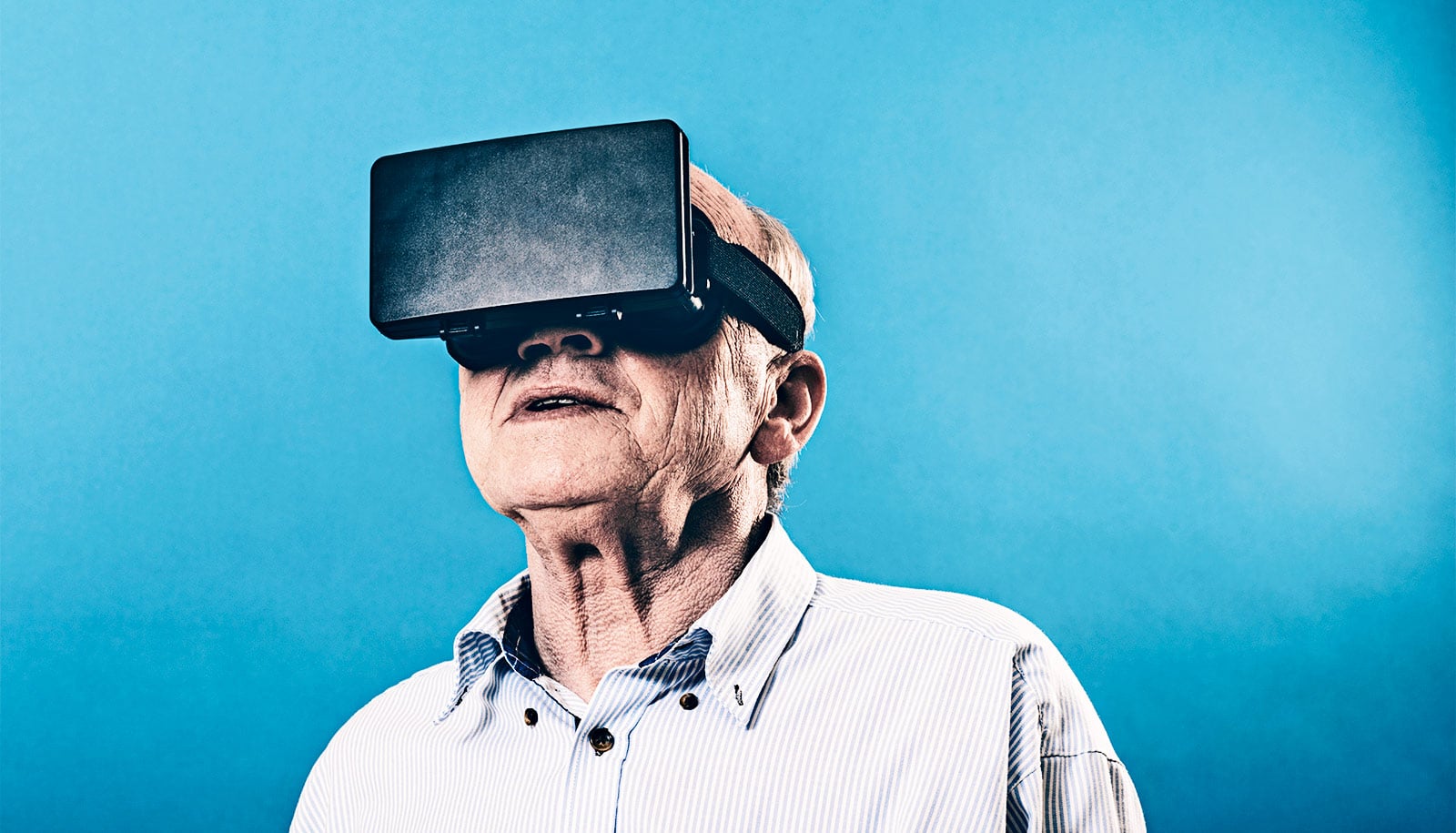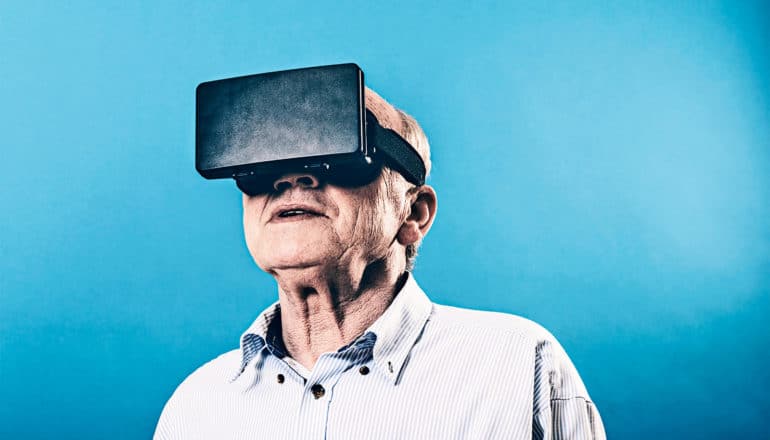
(Credit: Getty Images )
Virtual reality ‘clinic’ brings stroke therapy home
Taking occupational therapy for stroke survivors online and into virtual reality helps patients who couldn't make it to sessions in-person stick with it.

A virtual reality clinic could make it easier for stroke survivors to attend their physical and occupational therapy sessions, researchers say.
Results from a proof-of-concept study suggest that the technology—and the social connection it facilitates—are effective at encouraging therapy participation.
“Physical and occupational therapy are important parts of stroke recovery, in terms of helping survivors regain dexterity and functional motor ability,” says coauthor Derek Kamper, an associate professor in the joint biomedical engineering department at North Carolina State University and at the University of North Carolina at Chapel Hill.
“However, stroke survivors often face significant challenges in attending their therapy sessions. For example, many survivors don’t live near facilities that offer relevant therapy services.
“Our goal was to create an online, virtual reality platform that allows patients and therapists to interact in what is essentially real time,” says Kamper. “Clients could also use the system to work on therapy exercises with loved ones who live far away.”
Getting stroke survivors to therapy
The resulting system, called Virtual Environment for Rehabilitative Gaming Exercises (VERGE), is a software package that makes use of Kinect motion-sensor hardware to track the movement of patients and therapists. The system was developed by Kamper with collaborators at the Shirley Ryan AbilityLab and the University of Illinois at Chicago. VERGE currently supports three different rehabilitation activities, such as hitting a virtual ball back and forth when multiple users are present, or bouncing it off a wall when in single-user mode.
In the proof-of-concept study, researchers worked with 20 stroke survivors to evaluate the system. All participants had chronic impairment; 17 were men; and the mean age of the participants was 60.
For the study, half of the participants spent two weeks using VERGE in single-user mode, while the other half used VERGE in multi-user mode—interacting with other people remotely. The groups then switched modes for an additional two weeks.
Researchers found that study participants attended 99% of their therapy sessions when using VERGE in multi-user mode. Compliance was also good in single-user mode, with participants making 89% of their sessions.
Participants also spent 22% more time—or an additional 7.6 minutes—in their sessions when using VERGE in multi-user mode. And that time was more active, with participants moving their hands about 415 meters per session during multi-user sessions, as compared to 327 meters during single-user sessions.
“This suggests that the social aspect of VERGE has real benefits for stroke survivors in the context of getting them engaged in therapy,” Kamper says.
Scaling up
The researchers used the upper extremity portion of the Fugl-Meyer Assessment of Recovery after Stroke score to evaluate the efficacy of the VERGE therapy sessions, and saw a mean change of 3.2—which is comparable to what therapists would expect to see in chronically impaired patients after four weeks of therapy in a conventional clinical setting.
“The fundamental takeaway here is that VERGE has the potential to be a means of bringing clinical therapy to stroke survivors in their homes,” Kamper says.
“While these results are promising, we’d like to scale up to a larger, multi-site study that can help us more fully evaluate the technology before making any decisions about how to make it available for widespread clinical use. For example, we’d like to incorporate loved ones into the next round of testing, to see if that could further increase patient engagement with therapeutic exercises.
“In the longer term, we’d like to see if this could be a means of engaging in therapy remotely with burn survivors, or even as a means of encouraging older adults to engage in exercise and make social connections,” Kamper says.
“In terms of potential harms, there are very few. It’s possible that some people may experience motion sickness if they use virtual reality goggles rather than using a large screen or monitor. Otherwise, the only risk we can think of is soreness from unaccustomed activity.
“Costs are directly related to the equipment you need to make use of VERGE: a computer, a mouse, a screen, or goggles for viewing, and the Kinect motion sensor equipment—plus an ethernet or WiFi connection to support the multi-user mode. The big expense is the computer; the Kinect is generally less than a few hundred dollars.”
The paper appears in Archives of Physical Medicine and Rehabilitation. Additional coauthors of the paper are from the Shirley Ryan AbilityLab and the University of Illinois at Chicago.
The National Institute on Disability, Independent Living, and Rehabilitation Research—which supported the MARS3 Rehabilitation Engineering Research Center at the Shirley Ryan AbilityLab—supported the work.
Source: NC State
The post Virtual reality ‘clinic’ brings stroke therapy home appeared first on Futurity.
Share this article:
This article uses material from the Futurity article, and is licenced under a CC BY-SA 4.0 International License. Images, videos and audio are available under their respective licenses.
Related Articles:
Can a virtual kayak ride speed up stroke recovery?
March 14, 2022 • futurityVirtual green space boosts pregnant women’s well-being
Nov. 18, 2022 • futurityLinks/images:
- https://www.futurity.org/virtual-augmented-reality-nature-1584602-2/
- https://www.futurity.org/xbox-kinect-lungs-test-1125252-2/
- https://www.futurity.org/heart-attacks-strokes-us-751652/
- https://doi.org/10.1016/j.apmr.2019.10.182
- https://news.ncsu.edu/2019/11/vr-stroke-therapy/
- https://www.futurity.org/stroke-therapy-virtual-reality-2218502/
- https://www.futurity.org


